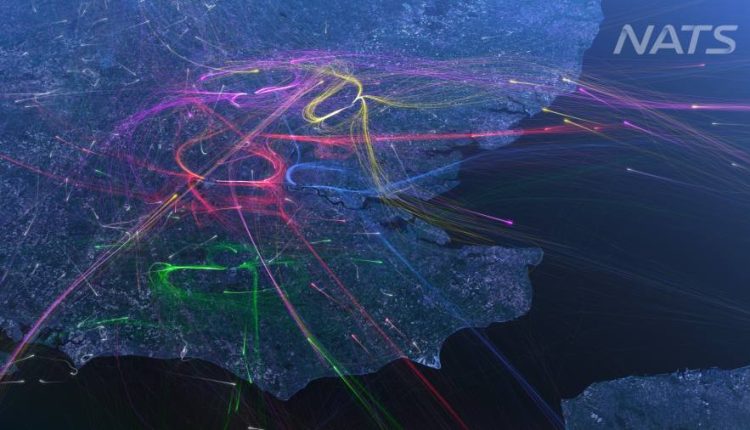Receive free Artificial intelligence updates
We’ll send you a myFT Daily Digest email rounding up the latest Artificial intelligence news every morning.
UK researchers have produced a computer model of air traffic control in which all flight movements are directed by artificial intelligence rather than human beings.
Their “digital twin” representation of airspace over England is the initial output of a £15mn project to determine the role that AI could play in advising and eventually replacing human air traffic controllers.
Dubbed Project Bluebird, the research is a partnership between National Air Traffic Services, the company responsible for UK air traffic control, the Alan Turing Institute, a national body for data science and AI, and Exeter university, with government funding through UK Research and Innovation, a state agency. Its first results were presented at the British Science Festival in Exeter.
Reasons for involving AI in air traffic control include the prospect of directing aircraft along more fuel-efficient routes to reduce the environmental impact of aviation, as well as cutting delays and congestion, particularly at busy airports such as London’s Heathrow.
There is also a shortage of air traffic controllers, who take three years to train.
Richard Everson, professor of machine learning at Exeter university, said Nats had a more complete database of past flight records than the world’s other air traffic control bodies, which the researchers are using to train their AI system.
“We have been preparing for this over the past decade by recording air traffic movements over the UK,” said Richard Cannon, Nats research leader on Bluebird. The data includes 10mn flight paths.
Human controllers and AI agents are now beginning to work together to process aircraft within the project’s digital twin of UK airspace, using accurate simulations of real-life air traffic.
“By the end of the project in 2026, we aim to run live ‘shadow trials’ in which the AI agents will be tested on air traffic data in real time, allowing a direct comparison with the decision making of human air traffic controllers,” said Cannon.
But he emphasised that the AI system would have no authority to actually determine aircraft routing.
If the research succeeds, it is likely to lead first to AI working with people on more extensive operational trials over several years, before Nats and other air traffic bodies consider introducing a computer-controlled system.
Nats already has a powerful computer system processing data for one of the world’s most crowded airspaces, but it does not currently use AI to predict future flight trajectories.
Last month the system failed over the bank holiday weekend because it could not recognise a flight plan with contradictory data, resulting in travel chaos. The Civil Aviation Authority has launched a probe into what went wrong and airlines are demanding compensation from Nats.
Cannon and Everson said they could not comment on whether AI could have prevented the system failure, which forced the cancellation of more than 1,500 flights.
But Everson said AI should increase the resilience of air traffic control and cut the risk of its failing when faced with unexpected events.
The digital twin built by Bluebird covers the so-called London flight information region, which involves airspace over most of England and Wales.
Everson said the AI system is routing aircraft with the necessary separation of 1,000ft vertically and 5 nautical miles horizontally.
It also ensures that each flight path remains safe with no risk of a collision for at least 15 minutes, if radio communications with the pilot fail for some reason.
“In every air traffic control system in the world all decisions are made by a human,” said Cannon. “We are not saying that we want to automate the skies over the UK but we are pushing the envelope as far as we safely can.”
Read the full article here

